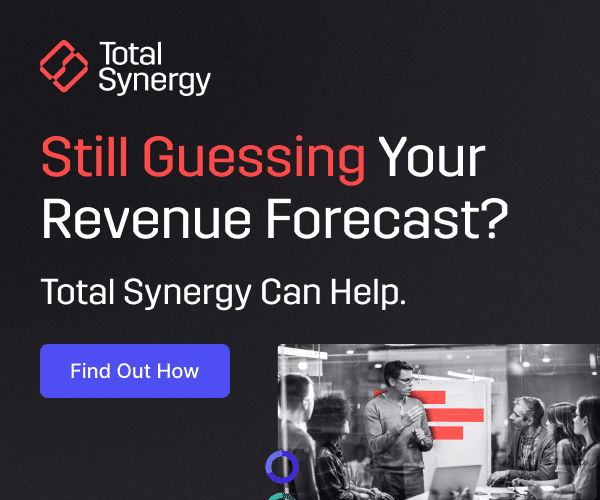For architecture and engineering firms, the ability to anticipate future revenue isn’t just helpful—it’s essential. Project pipelines ebb and flow. Clients delay. Resources get stretched. And while design might be your passion, your business runs on predictability.
That’s where revenue forecasting steps in. It gives you a sharper lens on what’s ahead, allowing you to make smarter decisions around hiring, budgeting, and scaling. Without a reliable forecast, cash flow surprises become the norm, and growth becomes guesswork. But with it, you’re not just reacting to what’s happening—you’re steering the firm with purpose. Whether you’re navigating a backlog or chasing new business, accurate revenue forecasting is the difference between staying afloat and moving forward with clarity.
What is Revenue Forecasting?
Revenue forecasting is the process of estimating how much income your firm is expected to generate over a specific future period. It’s based on current and projected project data, historical performance, client behavior, market trends, and pipeline strength. For A&E firms, it typically revolves around understanding how many billable hours your teams can deliver, at what rates, and when that work is likely to convert into cash.
Done well, it becomes a practical tool for shaping business strategy—telling you what work is coming, when it’s coming, and whether you have the capacity to deliver it profitably. It connects sales, operations, and finance into a single view of the future.
The Importance of Revenue Forecasting for A&E Firms
A&E firms are project-based, which makes their revenue unpredictable without proper planning. Unlike product-based businesses with consistent monthly sales, your income depends on project timelines, client approvals, and resource availability. Revenue forecasting gives you control in an environment that’s inherently variable.
It helps you anticipate cash flow gaps, make informed hiring decisions, and prioritize projects that deliver the best return. It also helps reduce the guesswork in business development. If you know your pipeline will fall short three months from now, you can take proactive steps to win new work now, not scramble later.
Forecasting also keeps stakeholders aligned. Principals, project managers, and financial controllers can see the same data and adjust accordingly. It fosters a more strategic culture—where decisions aren’t reactive but grounded in real projections. For firms that want to grow without going broke, forecasting is the foundation.
How to do Revenue Forecasting as an Engineer or Architect
Start with the Projects You’ve Won
Begin with confirmed projects. Break them down by phase, duration, and the expected fee. Assign realistic timelines for delivery and match them to your team’s capacity. It gives you a baseline of committed revenue.
Factor in Your Pipeline
Next, incorporate likely opportunities. Don’t treat every proposal as guaranteed—use weighted forecasting. Apply a probability percentage to each prospect based on how close it is to closing. This helps you avoid overestimating and gives you a more honest view of potential revenue.
Align Forecasts with Capacity
Cross-check forecasts against your resourcing. Do you actually have the people to deliver this work within the expected timeframes? If not, your forecast needs to reflect potential delays or bottlenecks. This step turns your forecast from a financial estimate into a realistic operational plan.
Track Forecast vs. Actuals
Once your forecast is live, measure its accuracy. Regularly compare what you expected to bill versus what you actually billed. This helps refine your assumptions and build a stronger forecasting model over time.
Use the Right Tools
Manual spreadsheets can only take you so far. They’re prone to error and disconnected from real-time data. Use a platform built for A&E firms that connects forecasting with project schedules, timesheets, and invoicing.
Finding the Best Revenue Forecasting Software as an A&E Firm
Look for A&E-Specific Functionality
Generic tools won’t cut it. Your software should understand the nuance of project-based revenue—phased billing, resource planning, utilization rates, and backlog forecasting. Total Synergy, for example, was built specifically for the A&E space, making it far more intuitive for A&E firms.
Prioritize Integration
Forecasting doesn’t exist in a vacuum. Look for software that integrates with your project management, time tracking, and accounting systems. When your data flows automatically, your forecasts stay current and reduce manual input errors.
Demand Real-Time Visibility
The best tools offer live dashboards that show revenue, workload, and profitability in one view. If your forecast is static, it’s outdated the moment a project scope shifts. Total Synergy’s forecasting software gives you a dynamic picture—so you can pivot in real-time.
Consider User Experience
The tool should be easy to use for both principals and project managers. If your team avoids it because it’s too complex, your forecast will suffer. Look for clean interfaces and role-based access that align with your team’s workflow. Total Synergy’s solution makes it easy to visualize revenue with intuitive drag-and-drop Gantt charts.
Revenue Forecasting Software from Total Synergy
Total Synergy has spent over twenty-five years helping architectural and engineering firms get a clearer picture of their business. Our revenue forecasting software is designed specifically for A&E practices—connecting your project data, resourcing, and financials into one live view. It gives you real-time insight into expected revenue, backlog, and capacity so you can make smarter decisions and avoid surprises.
Whether you’re managing a single office or multiple studios, our platform scales with your growth. It’s not just about numbers—it’s about clarity. If you’re ready to turn uncertainty into strategy, book a demo today and see how we make revenue forecasting simple and powerful for your A&E firm.





